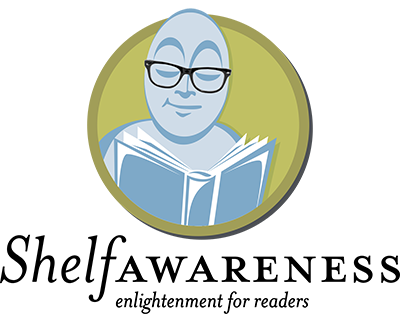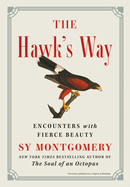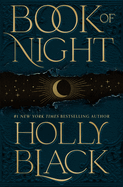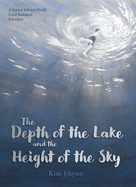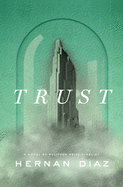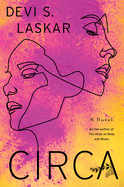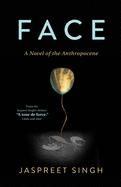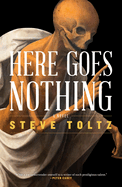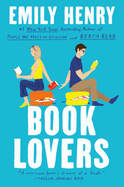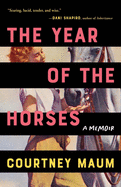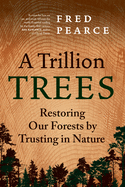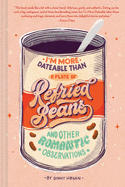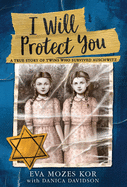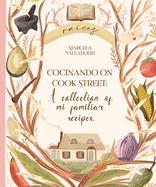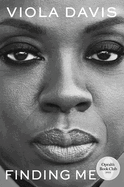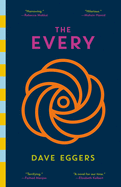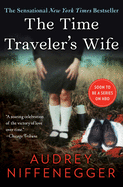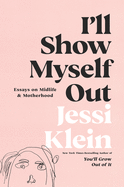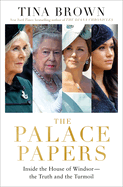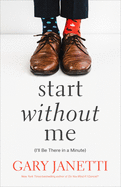Tuesday, May 3, 2022
In this issue, we review Holly Black's gripping foray into adult books, Book of Night, introducing an irresistible femme fatale, a grifter trying to go straight; naturalist Sy Montgomery pays tribute to a "living dinosaur" in The Hawk's Way; debut author/artist Jihyun Kim brilliantly captures The Depth of the Lake and the Height of the Sky in her wordless picture book; plus many more.
Maud Newton describes in The Writer's Life how her book Ancestor Trouble: A Reckoning and a Reconciliation "flowed from decades of wrestling with my own strange and troubled Southern family," the books she read during her research, and about the book that made her cry. --Jennifer M. Brown, senior editor, Shelf Awareness
Trust
by Hernan Diaz
Trust has one question at its heart: Who was Mildred Bevel? In Hernan Diaz's engrossing, high-concept second novel, he takes a four-part approach to answering the question: a short novel, an unfinished autobiography, a memoir and Mildred's own journal.
In Bonds, a fictionalized version of Mildred's life, novelist Harold Vanner has renamed her Helen and her New York financier husband Benjamin. Referring to Benjamin's standing after the stock market crash of 1929, Vanner writes, "Only one man seemed to have been immune to the catastrophe." As Benjamin proceeds to multiply his assets, Helen's "quiet form of mania" grows so debilitating that he takes her to a sanatorium in Switzerland for treatment.
Benjamin comes across so atrociously in Vanner's novel that Mildred's husband, Andrew, on whom Benjamin is based, undertakes a score-settling autobiography, My Life. A rough draft of Andrew's book immediately follows Bonds and reads like a spluttering self-justification. Trust's third section--A Memoir, Remembered--reveals that My Life was co-written by Ida Partenza, a secretary Andrew hired to help him with the book. Young Ida, like the reader, wants to learn the truth about Mildred's fate. However, it's not until decades later that she finally begins her memoir and detective work.
While Diaz (In the Distance) doesn't offer an effortless ride for readers who have no head for business, underneath the shoptalk is an exhilarating, unarticulated debate between Andrew Bevel's Randian individualism and the ideology that Ida learned from her Italian-immigrant anarchist father. Inevitably, Mildred has something to say about all this in the novel's fourth section, which comprises her heartbreaking--and, given her destiny, heartbreakingly named--journal, Futures. --Nell Beram, author and freelance writer
Discover: This heady historical novel uses four forms to illuminate its central character: a novel within a novel, an unfinished autobiography, a memoir and a journal.
Circa
by Devi S. Laskar
Devi S. Laskar's sophomore novel, Circa, is an intense meditation on multigenerational grief and loss. Laskar (The Atlas of Reds and Blues) adopts an uncommon second-person narration for Heera, born in New York and raised in Raleigh, N.C., by Indian immigrant parents. She's American by birthright, but she's relentlessly reminded, "it is the India of your ma and baba's past where you live day to day." For now, she's a senior facing high expectations: "it will reflect badly if she cannot even enter Princeton or Harvard." Her best friends--despite the complicated history their parents share with Heera's parents--are siblings Marie and Marco, the latter a year older and maybe her first love.
And then a drunk driver kills Marie on Heera's 18th birthday. Heera and Marco both "change for good in those hours just after Marie dies." Marco demands to be called Crash. Heera becomes Dia--"Heera" means "diamond" in Bengali--and assumes its "glassy hard brilliance... dry-eyed and stoic." The survivors veer sharply apart. Heera accepts an arranged marriage in New York City, although her disengaged husband allows her to attend college. Marco all but vanishes, until he appears unexpectedly at an extended family celebration. Everything--or nothing--could change.
Set in the late 1980s through the 1993 bombing of the World Trade Center, Laskar's slim narrative shrewdly belies fierce depth. While Marie's shocking death mutes Heera for years, the women around her seem to exemplify possible paths: her resigned mother; her mother-in-law, trapped by others' opinions; and a family friend's missing daughter. Skillfully and empathically, Laskar carves Heera a future of her own. --Terry Hong, Smithsonian BookDragon
Discover: A young woman devastated as a teenager by the loss of her best friend is finally jolted into claiming her own future in Devi S. Laskar's vivid sophomore novel.
Face: A Novel of the Anthropocene
by Jaspreet Singh
Jaspreet Singh's third novel, Face, presents a mesmerizing narrative. "In this new epoch most stories rhyme with crime," Singh opens. (Indeed, two murders on two continents will happen by novel's end.) This clever beginning introduces strangers Lucia and Lila ("correct pronunciation: Leela"), who meet in a Calgary fiction workshop. Their fates are already decided by chapter two: "neither one of them was aware that within the next fifty-one days one of them was going to die."
Lila is an award-winning journalist for a science magazine and wants to learn to write creatively. The workshop instructor randomly partners Lila with Lucia; the pair become fast friends. Lucia's husband, Amitabh, is an Indian immigrant like Lila, familiar from a distance: "I had a feeling that I knew that face," Lila notes to herself at first glance. She meets Amitabh again at a geology conference, discovering him where he shouldn't be. Their interactions raise more questions, further provoking Lila to seek answers. Meanwhile, both Lucia and Lila continue to construct their assigned fictions, which veer too closely to suppressed truths.
Singh (Helium), born in India and based in Calgary, is also a scientist with a doctorate in chemical engineering. Face is riotous with erudition--a heady mix of global climate warnings, earth sciences, fossil discoveries and hoaxes, and speculative fiction (Liu Cixin and Octavia Butler get nods), all amalgamated into gorgeous prose. Lucky readers who choose this one can expect temporal shifts, compounding mysteries and irresistibly unreliable--and even otherworldly--narration. --Terry Hong, Smithsonian BookDragon
Discover: The erudite third novel from Indian Canadian author Jaspreet Singh presents deliciously unreliable, remarkably satisfying narration.
Here Goes Nothing
by Steve Toltz
Life sucks, then you die. Then the afterlife sucks, and then you might die again. In the deeply dark comedy Here Goes Nothing by Steve Toltz (Quicksand), readers meet no one who is sure what happens after that.
Angus, who drifted through life mostly via petty crime, is anticipating the birth of his first child when he is murdered by a man who is in love with his wife, Gracie, an unorthodox wedding officiant. Never having believed in any kind of religion or afterlife ("Heaven was a childish dream, Purgatory an obvious metaphor, Hell credible only on earth"), Angus is surprised to find himself in a world beyond death ("It's humiliating how wrong you can be") and, furthermore, one that is every bit as bureaucratic and full of drudgery and unrest as the world he knew. The realm of the living faces the beginning of another pandemic, and a huge influx of the dead creates a situation equivalent to a refugee crisis on the spiritual plane. Angus struggles through banal jobs, lousy apartments and amazingly few answers. When he learns of a machine that will let him haunt the home where he was killed, he devotes even more time to obsessing about Gracie. Circumstances might even give him the chance for revenge.
Toltz's vision of the near future and the afterlife is surreal, sharply funny and as dark as the grave. Fans of noir fiction and quirky thrillers, such as Adam Sternbergh's Shovel Ready, will dig right in. --Kristen Allen-Vogel, information services librarian at Dayton Metro Library
Discover: The afterlife offers no rest, no peace and few answers in this darkly comic examination of the modern world.
Science Fiction & Fantasy
Book of Night
by Holly Black
Holly Black has a knack for heightening the tension between the world as readers know it and supernatural elements that infiltrate that world, bringing her characters face to face with themselves.
In her gripping debut novel for adults, Book of Night, Black (the Curse Workers series; Doll Bones, a Newbery Honor book; The Coldest Girl in Coldtown) creates an irresistible femme fatale in Charlie Hall, a gifted grifter living between the gritty real world of Easthampton, Mass., and its cursed underbelly, where gloamists manipulate human shadows for money and prestige. From youth, Charlie has purloined books and artifacts for the gloamists, but for the past 10 months, she's been trying to go straight. She likes her bartender job and her boyfriend, Vince. But when she comes upon one of her bar patrons--body gutted, shadow shredded--Charlie gets sucked back into the game to uncover the culprit. And she can't help thinking Vince is connected somehow to Easthampton's shady dealings; he has no shadow ("shadowless people had an absence in them"). Or is it just that she can't believe she's worth his affection? "That's what good con artists did," she tells herself. "They didn't need to convince you of anything, because you were too busy convincing yourself."
Into her haunting mystery, with classic horror and gothic elements, Black injects a sizzling romance and a protagonist attempting to do the moral thing in an amoral world. --Jennifer M. Brown, senior editor, Shelf Awareness
Discover: Holly Black's gripping adult debut twines elements of horror and mystery with a sizzling romance starring a femme fatale.
Romance
Book Lovers
by Emily Henry
Emily Henry's endearing Book Lovers centers on Nora Stephens, a shrewd literary agent who has somehow been cast in the role of "Evil Villainess" in her own life. She's been dumped no less than three times by boyfriends who have left the city on some temporary basis but who fall in love with the small-town vibes--and a small-town girl, decidedly unlike Nora. She tells herself she's made peace with that, pouring her heart into work and her younger sister, Libby, the only family she has left after their mother's death. When her sister invites her on a much-needed vacation to a small town in North Carolina, she doesn't expect Libby's Life-Changing Vacation List, drawn straight from a "small-town romance novel experience," to be actually life-changing. But when the "Dour, Unappeasable, Stick-in-the-Mud" editor she knows from New York shows up in the same small town, sparks fly and lives are, in fact, changed.
Like Henry's past novels (Beach Read), Book Lovers uses classic romance tropes with purpose and intention, offering readers a satisfying romance unto itself, while also reflecting on why romance novels are so enticing to begin with. Henry draws in themes of family and mental health, holding and taking space for self and loved ones, and the power of books to heal, soothe and reveal. "This book has crushed me with its weight and dazzled me with its tiny bright spots," says Nora of a new manuscript she's working on with a client. These words could describe Book Lovers, a smart, charming and dazzling book unto itself. --Kerry McHugh, freelance writer
Discover: Emily Henry's Book Lovers, a smart, charming and book-themed contemporary romance, tells the story of a New York literary agent and an editor who find love in a small town.
Biography & Memoir
The Year of the Horses: A Memoir
by Courtney Maum
Novelist and writing guru Courtney Maum takes readers on a candid, deeply moving journey that details how she found her way out of a labyrinth of depression by rekindling her passion for horses.
By her 35th birthday, Maum (Before and After the Book Deal; Costalegre) was a successful novelist, working on her second book. She was at her happiest--a beloved wife and doting mother of a beautiful baby girl, Nina. She and her equally creative filmmaker husband had moved from Brooklyn, N.Y., into a fixer-upper house they bought in the Berkshire mountains of Massachusetts. But when Nina turned two, something indefinable manifested in Maum--an existential crisis. Maum was deluged with roiling feelings that stalled her writing, plagued her with insomnia and provoked a general feeling of emotional malaise. A non-life-threatening car crash sustained with her husband and daughter "was a match to the depression" that would all-out engulf her. However, the accident proved a necessary jolt that sent Maum on a journey to reassess her life and decipher what might bring her a sense of peace and joy, and restore her equilibrium.
In therapy, Maum mined her past, recognizing how she missed her affinity and fascination for horses, starting when she was a child with a pony, boarded in a barn near her family's Greenwich, Conn., home. Maum's journey of healing and salvation in reconnecting to equine culture is wittily engaging and uncompromisingly forthright. She confronts the past, while also braiding in delightful flourishes regarding the metaphorical meanings of horses and the universal role they have played throughout history and in the arts. --Kathleen Gerard, blogger at Reading Between the Lines
Discover: This candid, resolute memoir details how a writer suffering an existential crisis found healing and salvation in her passion for horses.
Nature & Environment
The Hawk's Way: Encounters with Fierce Beauty
by Sy Montgomery
In the radiant The Hawk's Way, naturalist Sy Montgomery (The Hummingbirds' Gift), who has written more than 30 books for children and adults, pays tribute to the raptors that offer her close encounters with wildness--and to the humans who mediate that relationship.
The falconer-bird bond is unusual, Montgomery discovers: it's a hunting partnership, described by her falconry instructor as one in which the human is "the junior partner." Montgomery's hawk-handling experience, which spans more than a decade, begins with a visit to Nancy Cowan, master falconer in New Hampshire. When Cowan introduces her to Jazz, a four-year-old Harris's hawk, Montgomery is smitten: "I love that she is fierce; and I love, too, that she might be unpredictable." Montgomery's travel schedule does not permit an apprenticeship with Cowan, but her interest persists. Along with tales of her growing familiarity with raptors, including her participation in the Audubon Society's Hawk Watch and the introduction to a falconer neighbor's hawk, Montgomery delivers a snappy survey of the history of falconry, with its specific equipment and terminology. For instance, a bird ready to hunt is "in yarak," which linguists say might come from a Persian term for power.
A hawk is a "living dinosaur," Montgomery insists, not a pet or accessory. She passionately conveys the thrill of connection with "a mind wholly unlike my own," but falconry also brings sadness. Jazz dies suddenly of cancer, and this short work (adapted from a chapter of Montgomery's Birdology, published in 2010) is in memory of Cowan, who died early in 2022. Collapsing the distance between birds and people, this concise and charming book feels custom-made for readers of Helen Macdonald's H Is for Hawk. --Rebecca Foster, freelance reviewer, proofreader and blogger at Bookish Beck
Discover: Sy Montgomery's radiant personal account of human connection with birds celebrates the wildness of raptors.
A Trillion Trees: Restoring Our Forests by Trusting in Nature
by Fred Pearce
The idea of planting one trillion trees to turn back the press of climate change and humans' planetary destruction has been kicked around for a few decades now. But what does that really mean? And how could it be done effectively so that the impact is real and lasting, not just large gestures that can cause greater harm than good? In A Trillion Trees: Restoring Our Forests by Trusting Nature, environmental journalist Fred Pearce asks these important questions. He finds practical, if potentially uncomfortable, answers by exploring forest ecosystems ranging from the Amazon rainforest to the hills of Nepal--and everywhere in between.
Pearce (Fallout) clearly outlines how forests and international waterways are deeply intertwined and interdependent. He also deftly points out the hypocrisies and failures of the so-called green initiatives of rich nations, asserting that a "global restoration of the world's forests will require rich nations to take responsibility for the impact of their consumption, to both protect existing forests and make room for more."
The author combines knowledge from environmental science, meteorology and the perspectives of Indigenous communities around the world to provide evidentiary support for the practices of stewardship as Indigenous tribes engage in it, community forests and agroforestry. Above all, Pearce demonstrates that nature knows best. Reforestation is successful when done in the right places with an emphasis on biodiversity, usually by just letting the forests recover without human interference. Readers will leave this comprehensive piece of nonfiction with a sense of hope and direction for the future (and homework, thanks to an extensive further reading list). --Michelle Anya Anjirbag, freelance reviewer
Discover: Veteran environmental journalist Fred Pearce takes readers into forests around the world in an eye-opening look at the threats they face--and their recovery.
Humor
I'm More Dateable than a Plate of Refried Beans: And Other Romantic Observations
by Ginny Hogan
Stand-up comedian Ginny Hogan (Toxic Femininity in the Workplace) has reached a conclusion: dating sucks. She doesn't have a lot of nice things to say about relationships either. In the ceaselessly funny I'm More Dateable than a Plate of Refried Beans: And Other Romantic Observations, Hogan relives some of her mortifying, demoralizing and traumatic experiences on the dating scene and maybe--just maybe--makes up a few incidents for laughs.
The book is organized around themed chapters ("Early Dating," "Breakups and Exes," etc.) that are then subdivided into sections ("Overthink Piece" and "Textually Active") that include mock Cosmo quizzes ("What's the Right Dating App for You to Settle Down With?") and questionable advice ("You can't sleep with anyone who's ever slept with any of your friends. Not because of loyalty, but because they all have terrible taste. Why so many method actors?").
Occasionally Hogan takes a jaundiced look at romance classics of the screen and page. In "Phantoms and Prejudice," the narrator, sent back in time from the year 2022, has to break it to Pride and Prejudice's Lizzie Bennet that the reason she hasn't received a letter from Mr. Darcy isn't that he's busy; it's that he's ghosting her: "Look, Lizzie.... This is a Jane Austen novel. Everyone is just sitting around all day. If he wanted to write you, he would have written you."
I'm More Dateable than a Plate of Refried Beans is a faux self-help book like no other: it's hilarious, obscene and depressing--in the good kind of way. --Nell Beram, author and freelance writer
Discover: Ginny Hogan's mock self-help book about modern dating is consistently hilarious and frequently depressing--but in the good way.
Children's & Young Adult
The Depth of the Lake and the Height of the Sky
by Jihyun Kim
More than a foot tall and nine inches wide, the exquisite The Depth of the Lake and the Height of the Sky, by Korean author/illustrator Kim Jihyun, makes a magnificent first impression. The pages within showcase spectacular illustrations and, without a single word, gorgeously reveal a story of family, nature and discovery. Two parents, their young son and playful pup leave their city apartment for a car trip along country roads and through rolling hills to where grandparents await.
While the adults are busy with warm greetings, the boy notices a winding trail just beyond the windows. With the pup following, he ventures into the nearby forest. Through the trees, boy and dog discover a small wooden dock on a wide-open lake. The boy dives in to discover a wondrous underwater world of swaying plants and curious fish. Back on land, boy and dog soak in the bright sun until it's time to return to the house for a boisterous family meal. As darkness falls, the shimmering nighttime beckons boy and dog back out for a starry spectacle.
Kim's art, in her debut book, proves both visually splendid and cleverly contextual. The illustrations are "entirely drawn and painted using writing ink and slow-dry blending medium." Kim's opening palette is predominantly greyscale with just the merest suggestions of underlying blue. As the family transitions from city to country, the single color expands and intensifies. Every page turn brightens the scenery, as Kim deftly employs varying hues of blue to mirror the variations on the water's surface or to capture the limitless expanse of uninterrupted, soporific skies. --Terry Hong, Smithsonian BookDragon
Discover: In her debut, Jihyun Kim brilliantly captures the depth of the lake and the height of the sky in this wordless picture book masterpiece about a trip to the countryside.
I Will Protect You: A True Story of Twins Who Survived Auschwitz
by Eva Mozes Kor with Danica Davidson
Educator and Holocaust survivor Eva Mozes Kor recounts her brutal imprisonment, struggle for survival and journey to forgiveness in the grim but ultimately hopeful middle-grade memoir I Will Protect You: A True Story of Twins Who Survived Auschwitz, written with Danica Davidson.
Eva's childhood was marred by antisemitism and torment that culminated in their Jewish family's transfer to Auschwitz. Ten-year-old Eva and her identical twin sister, Miriam, were plucked from the crowd at the death camp and subjected to medical experimentation. Eva, fueled by a desire to protect Miriam, committed herself to surviving dehumanizing conditions and the suffering inflicted upon them by the notorious Dr. Josef Mengele. Against overwhelming odds, the sisters lived. Eva spent subsequent years of her life educating children on atrocities of the Holocaust and eventually found that forgiveness unburdened her from the weight of her memories: "I did not forgive Mengele and the other Nazis because they deserve it. I forgave them because I deserve it."
Davidson interviewed Eva, and Eva's clear voice provides an edifying lesson most welcome among Holocaust narratives. Davidson relates young Eva's experiences at Auschwitz with pragmatic and accessible prose that neither shies away from nor sensationalizes the horrors she suffered. Eva contextualizes historical trends of antisemitism with helpful background knowledge and offers her own post-liberation dalliance with Communism for nuance about the persuasive danger of nationalism. Backmatter includes a timeline and glossary, as well as eight pages of photographs.
A powerful testimony to survival and forgiveness, Eva's story should find quick purchase among collections of witness literature. --Kit Ballenger, youth librarian, Help Your Shelf
Discover: An educator and Holocaust survivor details her harrowing survival of Josef Mengele's Auschwitz medical experiments and the emotional journey toward forgiveness in this stirring and accessible middle-grade memoir.
In the Media
The Writer's Life
Reading with... Maud Newton
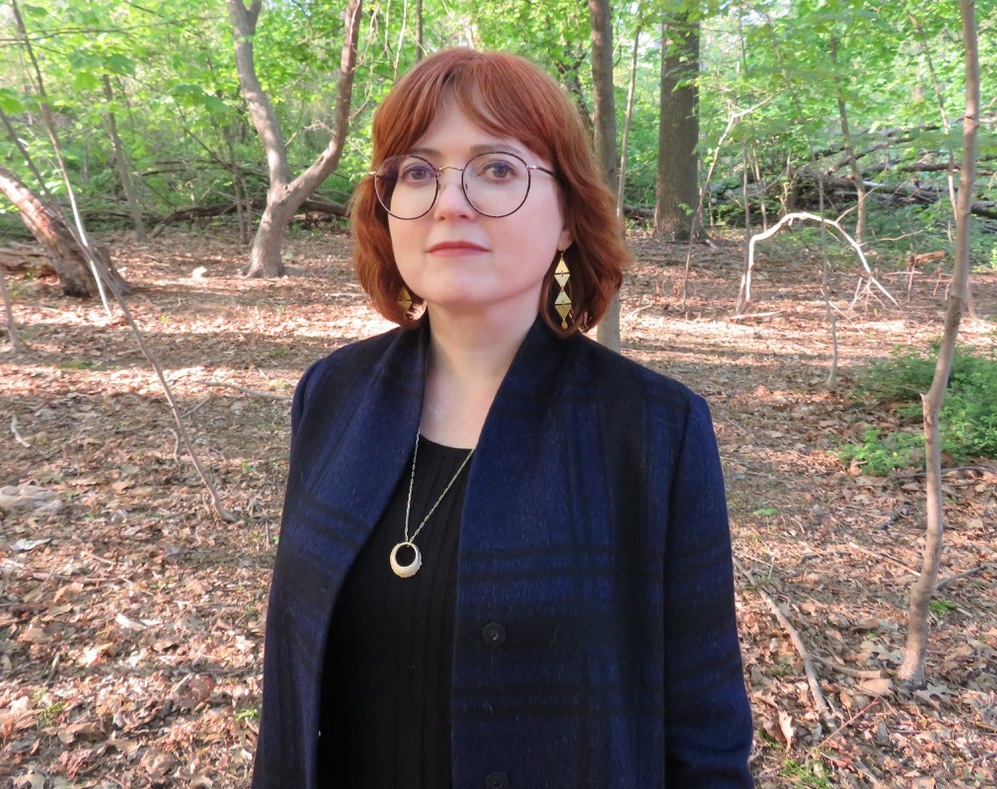 |
|
| photo: Maximus Clarke | |
Maud Newton is a writer and critic. Her first book, Ancestor Trouble: A Reckoning and a Reconciliation (Random House, March 29, 2022), grew out of family history posts on her blog and a 2014 Harper's cover story on Americans' obsession with genealogy. Her work has also appeared in the New York Times Magazine, Narrative, the New York Times Book Review, the Oxford American, Harper's Bazaar, the Los Angeles Times, the Boston Globe, Granta, Bookforum, the Paris Review Daily, the New Republic, the Awl and many other publications and anthologies, including the bestselling anthology What My Mother Gave Me.
Handsell your book to readers:
Ancestor Trouble flowed from decades of wrestling with my own strange and troubled Southern family and broadened into an exploration of history, psychology, genetics, spirituality and the transformational possibilities our ancestors have for all of us.
On your nightstand now:
I'm currently reading Robin Fleming's Britain After Rome, Caitlin C. Gillespie's Boudica, Owen Davies's Grimoires and Elaine Pagels's Beyond Belief (about the Gospel of Thomas), all fuel for the novel I'm working on, which seems to want to have an unexpected historical component.
Favorite book when you were a child:
One of my favorites was E.B. White's Charlotte's Web. My first-grade teacher read the book aloud to our class a chapter at a time, and she and I weren't the only ones sobbing by the last page.
Your top five authors:
Impossible to choose just five, but lately I've been rereading James Baldwin, Nathaniel Hawthorne, Muriel Spark, Jamaica Kincaid and W.S. Merwin. Merwin's late poetry tends to treat the Earth as kin to humans and in that way, it resonates deeply with changes in my own approach to life.
Book you've faked reading:
I was supposed to read Søren Kierkegaard's Either/Or for a college existentialism class but found it tedious. His Fear and Trembling was a more interesting entry point, although I'm still not a fan.
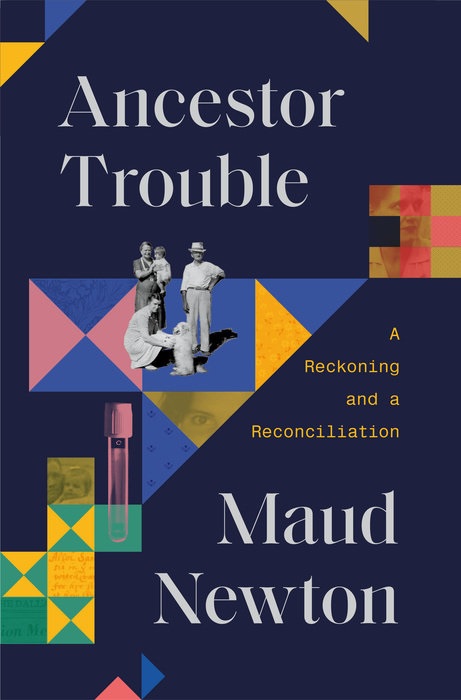 Book you're an evangelist for:
Book you're an evangelist for:
So many! It really depends on the person I'm evangelizing to. Books published over the past year that I can't stop recommending include Honorée Fanonne Jeffers's The Love Songs of W.E.B. Du Bois, Xochitl Gonzalez's Olga Dies Dreaming, Lauren Groff's Matrix, Rebecca Donner's All the Frequent Troubles of Our Days, Kaitlyn Greenidge's Libertie, Sarah Schulman's Let the Record Show and Taylor Harris's This Boy We Made.
Book you've bought for the cover:
I don't think I've ever bought a book for the cover alone, with the possible exception of the 1991 RE/Search zine Angry Women, edited by Andrea Juno and V. Vale, which introduced me to Wanda Coleman, Kathy Acker, Diamanda Galás, bell hooks, Susie Bright, Lydia Lunch, Holly Hughes and so many other mind-blowing artists and activists. The cover depicts a stern, slightly scowling, somewhat bemused or amused contemporary Medusa figure, whose face is surrounded by snakes in place of hair.
Book you hid from your parents:
My parents were strict Christians, one very evangelical and one more fundamentalist, so I hid quite a few books--from Judy Blume novels like Deenie, Forever and Then Again, Maybe I Won't as a preteen to Jay McInerney's Bright Lights, Big City and Bret Easton Ellis's Less Than Zero in my teen years. When I was in college and home for the summer, my mom confiscated my copies of Jean-Paul Sartre's Nausea and Friedrich Nietzsche's Thus Spoke Zarathustra, telling me they would "mess up" my mind.
Book that changed your life:
Nearly every book I love changes me a little bit. One from the past several years is Elaine Pagels's The Gnostic Gospels. Understanding the diversity of interpretations of Christianity in the century or two after Jesus's death, the extent to which the canonized Bible is arbitrary and the ways that Gnosticism reflects and might have been influenced by Buddhist thought has given me an interesting entry point into re-examining the religion of my childhood.
Favorite line from a book:
One passage that stayed with me as I worked on Ancestor Trouble is from Robin Wall Kimmerer's Braiding Sweetgrass: "After all these generations since Columbus, some of the wisest of Native elders still puzzle over the people who came to our shores. They look at the toll on the land and say, 'The problem with these new people is that they don't have both feet on the shore. One is still on the boat. They don't seem to know whether they're staying or not.' "
Five books you'll never part with:
So many! But here are five incredible, impeccable books by writers I know that I'll keep forever: Laila Lalami's The Moor's Account, Maaza Mengiste's The Shadow King, Sarah Smarsh's Heartland, Nicole Chung's All You Can Ever Know and Madeline Miller's Circe.
Book you most want to read again for the first time:
I'd love to be able to go back in time to my college years and read Alexander Chee's How to Write an Autobiographical Novel at that age. I feel like it would have prevented so much uncertainty around writing as a calling for me. Instead I urge the book on every young writer I know.
Books that were important for writing Ancestor Trouble:
To name just a few, I drew from personal memoirs, like Emily Raboteau's Searching for Zion and Dani Shapiro's Inheritance; from books about genetics and epigenetics written for a popular audience, such as Carl Zimmer's She Has Her Mother's Laugh and Siddhartha Mukherjee's The Gene; from scientific histories of heredity compiled for scholars, such as Heredity Produced: At the Crossroads of Biology, Politics, and Culture, 1500-1870, edited by Staffan Müller-Wille and Hans-Jörg Rheinberger; from books on biological inheritance in ancient and modern philosophy, from Aristotle's and Hippocratic writings to Jenny Davidson's Breeding and John Waller's Heredity; books on psychology, including Anne Ancelin Schützenberger's The Ancestor Syndrome, Kay Redfield Jamison's Touched with Fire, Carl Jung's Memories, Dreams, Reflections and James Hillman and Sonu Shamdasani's Lament of the Dead: Psychology After Jung's Red Book; and books on the role of ancestors in spiritual life, including Eternal Ancestors edited by Alisa LaGamma, the works of Malidoma Patrice Somé, Peter Brown's The Cult of the Saints, Francesca Stavrakopoulou's Land of Our Fathers, Ronald Hutton's Pagan Britain, the works of Graham Harvey and Ancestors in Post-Contact Religion edited by Steven J. Friesen.
Book Candy
Book Candy
Mental Floss showcased "10 of the bestselling authors of all time."
The New York Public Library recommended "picture books to celebrate AAPI Heritage Month" and "nine new fiction reads by Asian American women."
Author Lulah Ellender picked her top 10 books about gardening for the Guardian.
The British Film Institute screened "other Oceanias: a short history of Nineteen Eighty-Four adaptations."
Rediscover
Rediscover: The Interrupted Journey
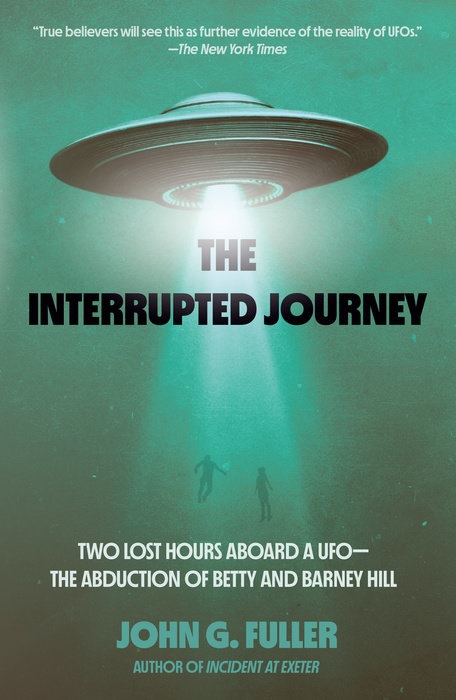 On the night of September 19, 1961, Betty and Barney Hill were driving near Lincoln, New Hampshire when they noticed a light moving erratically in the night sky. The Hills paused several times to watch the multicolored craft until they realized the interest was mutual. After a series of strange sounds, the couple came to several hours later and miles down the road. They finished driving to their home in Portsmouth, N.H., each bearing confusing images and impulses from the night before. The Hills reported their experiences to the Air Force, close friends and UFO researchers. In an attempt to end Betty's repeated nightmares about the incident, she and Barney underwent hypnosis sessions that resulted in remarkably similar accounts. Many elements of their ordeal--strange lights, missing time, inhuman entities and medical tests--would repeat thousands of times in skyrocketing alien abduction reports over following decades.
On the night of September 19, 1961, Betty and Barney Hill were driving near Lincoln, New Hampshire when they noticed a light moving erratically in the night sky. The Hills paused several times to watch the multicolored craft until they realized the interest was mutual. After a series of strange sounds, the couple came to several hours later and miles down the road. They finished driving to their home in Portsmouth, N.H., each bearing confusing images and impulses from the night before. The Hills reported their experiences to the Air Force, close friends and UFO researchers. In an attempt to end Betty's repeated nightmares about the incident, she and Barney underwent hypnosis sessions that resulted in remarkably similar accounts. Many elements of their ordeal--strange lights, missing time, inhuman entities and medical tests--would repeat thousands of times in skyrocketing alien abduction reports over following decades.
The Betty and Barney Hill story did not receive attention outside of UFO circles until 1966, when journalist John G. Fuller wrote The Interrupted Journey: Two Lost Hours Aboard a UFO. Fuller is also the author of We Almost Lost Detroit, The Ghost of Flight 401 and Incident at Exeter. On May 10, Vintage is reissuing The Interrupted Journey for the first time since its initial publication. --Tobias Mutter
| Advertisement Meet belle bear! |

